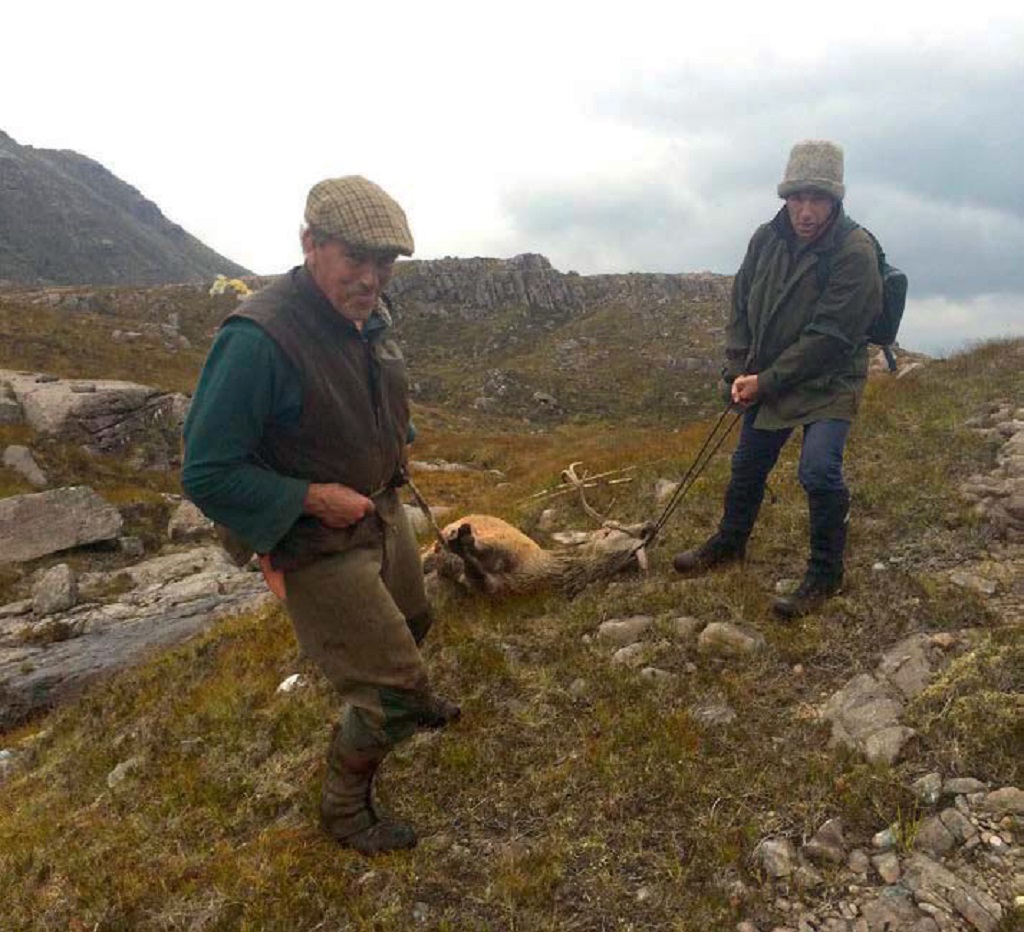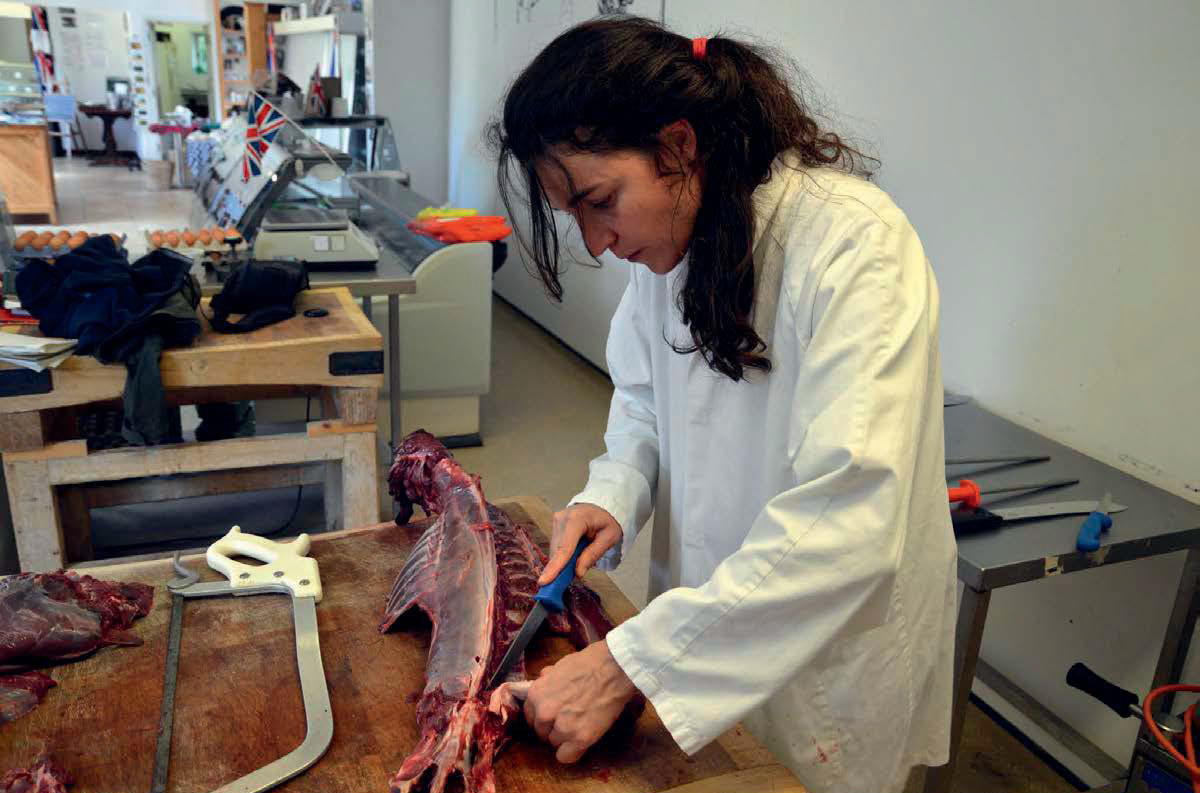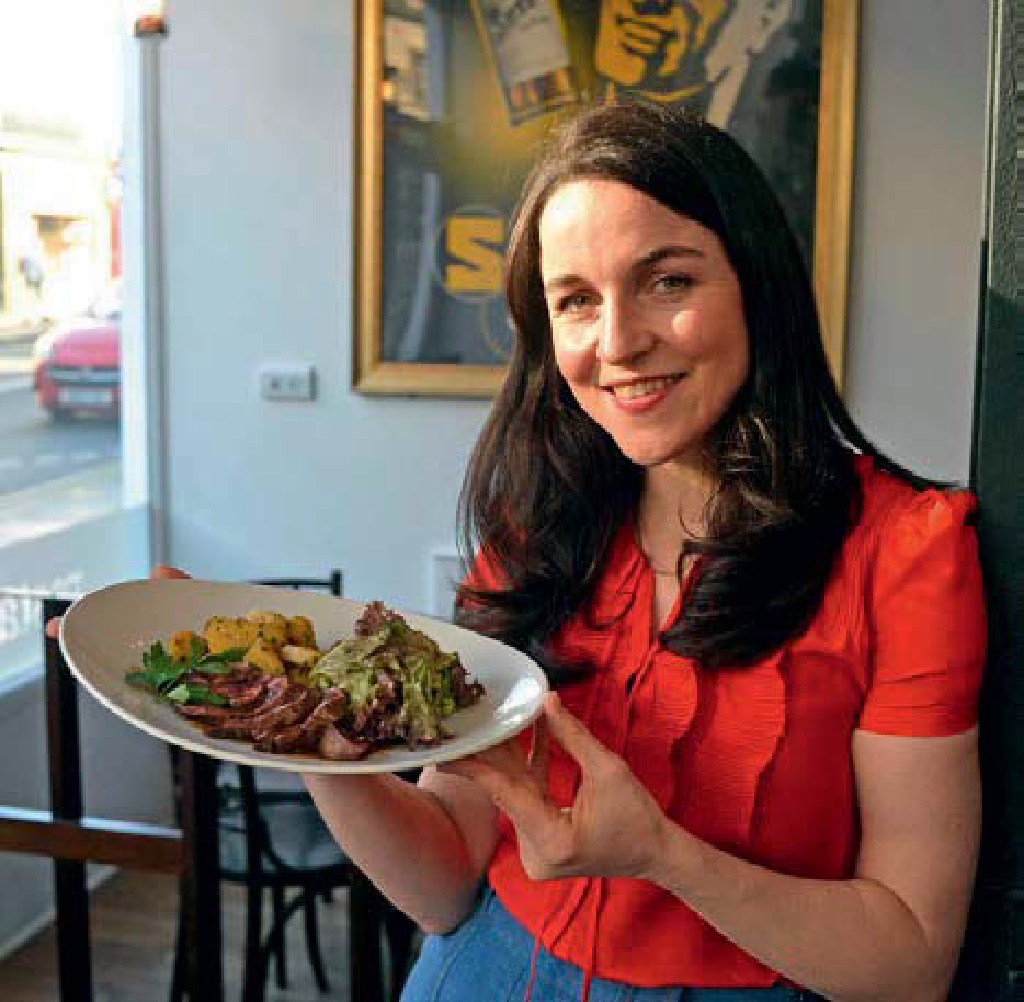
A year as the ethical carnivore comes full circle
Louise Gray looks back at what she learned in a year only eating animals she had killed herself.
The stag was lying down, his face turned towards me, his chin almost resting on the ground, having a wee midday snooze.
‘Go for his neck,’ said the stalker.
‘I can’t,’ I said. ‘It’s hidden. I’ll have to take him between the eyes.’
‘If you think you can do it.’
‘I can do it.’
When I started this column, I wrote about looking at a different stag down the barrel of a gun and deciding not to shoot. It was a much easier piece to write. Deer are beautiful beasts. No one wants to be the person to pull the trigger. We all want to eat them, but no one wants to take responsibility for their death.
It is this hypocrisy that motivated my idea to only eat animals I killed myself for a year.
I have described learning to fish for salmon, shoot rabbits with a rifle and pheasants with a shotgun. In the case of domestic livestock, where I have been unable to kill the animals myself, I have investigated how farm animals we eat, such as pigs, sheep, chicken and cattle, are raised on our behalf.
Most of the time I have been a vegetarian. I have learned a lot about the skills needed to kill, skin and prepare game, and about animal husbandry and welfare. I have also learned how to cook a mean chickpea curry.
The stag was the final piece in the puzzle and in a way the most ethical meal of all. There are now around 400,000 red deer in Scotland.

Dragging the 12-stone beast from the hill
While we all love to see these magnificent creatures in the wild, it is causing serious problems. Deer cause 7,000 road accidents a year. The ungulates also push out other wildlife as they eat baby trees, meaning woodland has no chance to regenerate. The Government order a certain number of deer to be killed every year and across Scotland, environmental groups encourage culling.
Modern guns are deadly accurate and deer stalking is seen as a humane way to source wild meat whilst helping woodland recover.
Ethical does not mean it is easy. Twice I went up the hill and bottled it. But on the third attempt, I was ready. I knew I could handle a rifle, and take a sure and steady shot as I had been practising on targets and smaller live game.
I was lucky enough to go stalking on the Ben Damph Estate in Torridon, where deer are controlled as part of wider wildlife management. My father, Duncan Gray, was my stalker for the day and my friend Dan Fields was my dragger, to help bring down the 12-stone beast from the hill.
We set off on a gloriously sunny day, taking a boat across Loch Damph and then climbing 1,500ft to look out over the blue mountains towards the Isle of Skye. The stags were bellowing and we saw ptarmigans, grouse and wheatears. Stalking is about more than the kill, it is about the day on the hill.
As José Ortega, the Spanish philosopher, wrote: ‘One does not hunt in order to kill. On the contrary, one kills in order to have hunted; for the immersion in the countryside, the healthfulness of the exercise, the distraction from a job.’
People come from all over the world to stalk in the Highlands, bringing in £70m annually to the economy. Except for a few estates that offer ‘trophy’ heads, most stalking is done as part of managing the deer population sustainably and the weaker specimens are taken first.
The cloud had come down and the wind picked up by the time we found a suitable specimen, a young stag with eight points on his antlers lying in the lee of a rock. Moving silently, we stalked in, creeping up the burn, around a hill loch and crawling the last 150 yards on our bellies until I was set up behind a rock with the rifle trained on the target.

Skinning and butchering the stag
My heart was pounding, but my hands were still. I did not think too hard about the ethics of the kill; I had already made my decision on that. I thought about one thing only: am I sure? Am I steady? Squeezing the trigger, I was concentrating so hard I felt my mind detach and move forward with the bullet. The next thing I knew, the stag was stone dead, tumbling off the ledge in slow motion, antlers first.
People ask, what was going through your mind? What were you thinking? I know what I wasn’t thinking. There is no testosterone surge, no primordial hit, no elation. A gun is not about freedom, it is not about being wild, it is about being absolutely in control. It is neither male nor female. You are either in control or you are not. You either hit or you miss.
We made sure the gun was safe and ran to the stag. Even then I did not feel exultant, I felt businesslike as we bled and gralloched the beast, blood spilling on the heather. There was no ‘blooding’, where blood is smeared on the face of a novice stalker. It would have felt wrong, like a celebration of killing and this was not what it was about, it was about the full experience.
It was only as we dragged the stag down the hill, the light fading, that I felt a moment of sadness for the stag and it was mixed with a much stronger emotion: gratitude.
I felt thankful again helping to skin and butcher the deer and eating the venison over a long hard winter. It is a strong meat, meaning you only want to eat it once or twice a week but every time I did, I thought of that beautiful stag and the day on the hill. The venison made delicious stew, burgers, sausages, pies and steaks shared with friends and family. In the hands of the chefs at L’Escargot Blanc, where I took some of the venison fillet as a prop to have my photo taken, it became cordon bleu.
This whole year has been about appreciating the animals we eat, something we have forgotten to do as a society. Meat comes in neat little packages in the supermarket, any evidence of life – or death – removed. It means we can gorge on meat.
In the rich world, we eat three times as much animal protein as we need. We already eat 60 billion animals a year and by 2050 it is expected to rise to 100 billion. Cheap meat comes at a cost to the animals raised in factory farm conditions. It is simply unsustainable.

The chefs at L’Escargot Blanc turned Louise’s stag into cordon bleu
Many people advocate a vegetarian or even vegan diet to reduce our impact on the planet. Certainly raising animals to eat causes greenhouse gas emissions because of the energy used in growing crops for feed and the methane emitted by ruminants like sheep and cattle.
An unexpected conclusion from my year is that in many ways I agree with this argument. Eating animals does seem an extravagance, especially if you fully understand the amount of work that goes into killing and butchering an animal.
But having spent a year speaking to farmers raising livestock and gamekeepers controlling wild animals to maintain the wider environment, I can see there is a role for certain kinds of meat. In Scotland we have a lot of rain and therefore a lot of grass to raise cattle and sheep. We also have some of the best wild food available from the most stunning wilderness in Europe.
Harvesting this meat is not only ethical it is maintaining the countryside we know and love. In the long term, it is not realistic to continue only eating animals I kill myself.
However, I hope that I will continue to be an ‘ethical carnivore’, which is to say eating less meat and only animals I feel have been raised and killed in a humane way. Many readers of Scottish Field will already eat like this as a matter of course, but in our increasingly urban society most have never had the chance to learn the realities of farming and harvesting wild game.
Through my book, I hope I can help them to understand how animals reach our plates, so they too can feel thankful for the meat we eat.
(This feature was originally published in 2016)
TAGS

